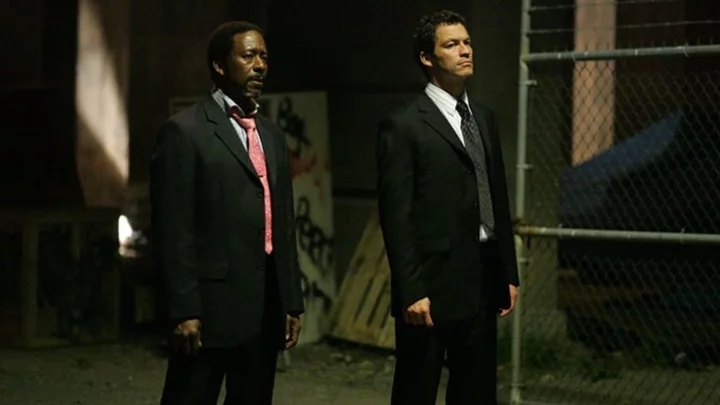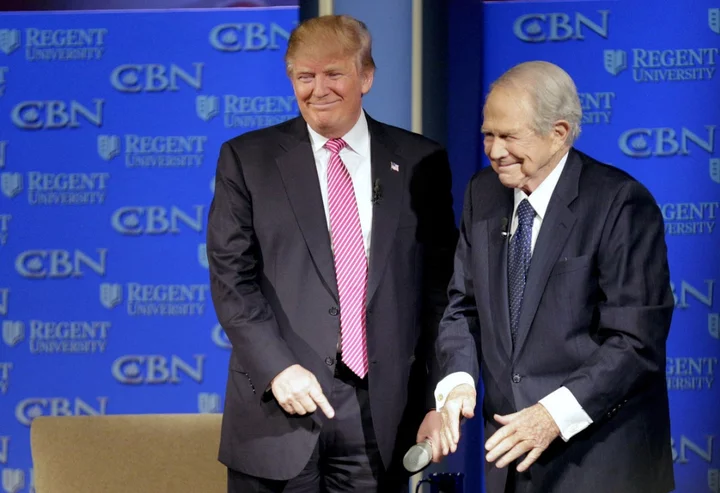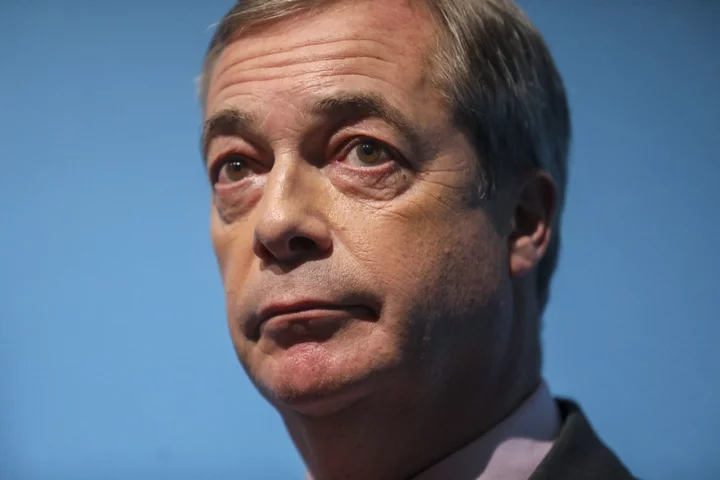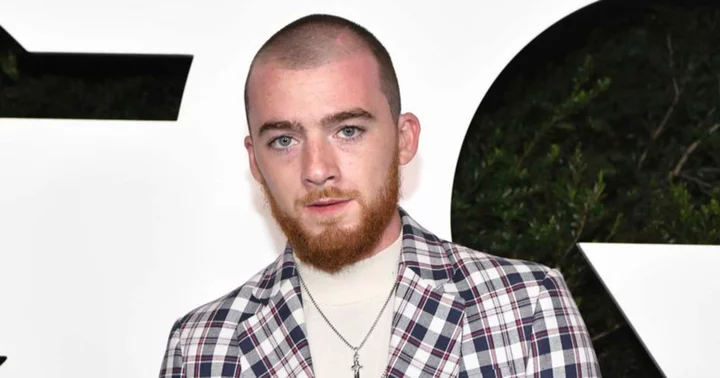It took a slow-but-steady climb for The Wire to emerge as a cultural phenomenon, but the show that challenged every cops-and-robbers television trope has permeated just about every corner of our culture. Here are 23 facts that might have eluded even the most dedicated Wire diehards. (Warning: spoilers abound.)
1. BARACK OBAMA LOVES IT, AND EVEN HAS A FAVORITE CHARACTER.
On more than one occasion, Barack Obama has cited The Wire as one of his favorite TV shows. Interestingly, during the 2008 presidential election, the show's greatness was one of the few things that both John McCain and Obama could agree on, with McCain mentioning it alongside Seinfeld as a personal favorite. And Obama’s favorite character? It’s pretty much everyone’s favorite character: the gay, drug dealer-robbing, criminal code-having, Robin Hooding stick-up boy Omar. “That’s not an endorsement. He’s not my favorite person, but he’s a fascinating character,” Obama told the Las Vegas Sun, adding that he’s “the toughest, baddest guy on the show.”
2. CREATOR DAVID SIMON RECEIVED A MACARTHUR GENIUS GRANT FOR HIS WORK.
The prestigious MacArthur Fellowship is awarded annually to between 20 and 40 United States residents who "show exceptional merit and promise for continued and enhanced creative work." Over the years, the MacArthur Foundation has cast a wide net with its $500,000 prize, awarding it to the likes of linguists, historians, scientists, poets, mathematicians, journalists, and countless other skilled specialists. However, Simon is one of only two screenwriters to have been awarded the prize (two-time Oscar winner Ruth Prawer Jhabvala received one in 1984) and is the only person to have won the award primarily for work on a scripted television series.
3. THE WRITERS ROOM HAD SOME MAJOR TALENT.
The Wire had several writers whose work extended well beyond the television world. George Pelecanos, one of America’s most successful and well-respected crime fiction writers, wrote eight episodes of The Wire and served as a producer on season three. Richard Price, who has writing credits on five episodes, was already an accomplished writer before getting hired for the show, having written several novels and screenplays, including the critically-acclaimed 1992 crime novel Clockers, as well as the script for Spike Lee’s 1995 film adaptation of his book. Mystic River and Gone Baby Gone writer Dennis Lehane wrote three epsiodes.
4. MANY CRITICS CONSIDER IT THE BEST TV SHOW EVER.
When it comes to pop culture, the word “best” is tossed around so often that it’s hard to take it seriously. But The Wire is one of just a handful of shows you could make a serious case for as "the best show ever.” , Slate, HitFix, and Complex have all, at varying times, named it the best drama ever to appear on the small screen, while almost every other major outlet of note has listed it among the best shows ever; it's part of an elite group that includes Seinfeld, The Simpsons, Breaking Bad, The Sopranos, M*A*S*H, and I Love Lucy.
5. YET THE SHOW NEVER—NOT ONCE—TOOK HOME AN EMMY.
Yep. That’s right. Two and a Half Men won nine Emmy Awards while The Wire, arguably the greatest work ever to grace the small screen, has not-a-one. In fact the show was nominated just twice, both times for its writing: once for the penultimate season three episode “Middle Ground,” which features the infamous Omar-Brother Mouzone-Stringer Bell face-off, and the season five series finale “–30–.”
6. ITS RATINGS RANGED FROM AVERAGE TO AWFUL.
Considering the quality and scope of the show, it was inevitable that The Wire would go down in the pantheon of all-time great TV shows. But the ratings during the show’s five-season run weren’t necessarily indicative of its quality or legacy. The audience topped out at about 4 million viewers, and hovered below the 1 million mark for much of the final season. Compare that to the more than 10 million people who tuned in for Breaking Bad's finale or the approximately 12 million viewers who watched the final episode of The Sopranos. These days, in an even more stratified media landscape, Game of Thrones handed 30.6 million viewers across all platforms for its seventh season finale.
7. THE SHOW HAS ITS ROOTS IN A MOSTLY-FORGOTTEN HBO MINISERIES.
The only time David Simon was actually able to nab an Emmy was for the critically-acclaimed-but-now-mostly-forgotten miniseries , which won awards for Outstanding Miniseries and Outstanding Writing for a Miniseries or a Movie (plus an Outstanding Directing for a Miniseries, Movie or a Special win for Charles S. Dutton). Based on a nonfiction book co-written by Simon and The Wire writer-producer Ed Burns, The Corner—which depicted life in poverty-stricken and drug-filled West Baltimore—overlapped thematically with The Wire and also shared a bevy of cast members, including Clarke Peters (Lester Freamon), and Lance Reddick (Cedric Daniels).
8. DAVID SIMON HAD AN IDEA FOR THE WIRE'S SIXTH SEASON.
Considering the ratings hole The Wire fell into during season five, David Simon surely knew that, like fighting the drug war, holding out hope for a sixth season would have been an exercise in futility. But had The Wire been given a sixth season, Simon thought the exploding Latino population in Southeast Baltimore would have been the subject. According to Simon, the topic would have been directly in The Wire’s wheelhouse, since “immigration is this incredibly potent source of friction and ideology, and maybe always has been in American life.” But the time it would have taken for Simon’s team to research immigration, combined with the low ratings, more or less buried the idea.
9. SIMON IS STILL PREPARED TO MAKE ANOTHER SEASON, UNDER ONE CONDITION.
By the time The Wire had enough critical clout and rabid fandom to legitimately justify another season, David Simon was hard at work on another project, the post-Katrina New Orleans drama Treme, which kicked off in 2010. However, when former Attorney General Eric Holder, yet another powerful fan of the show, gently joked in 2011 that he’d like to see another season, he received a not-so-joking response from Simon, who retorted “we are prepared to go to work on season six of The Wire if the Department of Justice is equally ready to reconsider and address its continuing prosecution of our misguided, destructive and dehumanizing drug prohibition.” Unfortunately, it didn't work out.
10. DOMINIC WEST NEVER THOUGHT THE SHOW WOULD LAST.
In fact, that's one of the main reasons why Dominic West—who starred as Jimmy McNulty—took the show. According to West, a Brit, he landed the role by doing his best Robert De Niro impression, but was reluctant to take the job since it meant signing a five-year contract to live in Baltimore. His agent eased his fears by telling him “don't worry, it'll only last one season."
11. THEY BUSTED OUT BIG-GUN MUSICIANS TO RECORD THE THEME SONG FOR ALL BUT ONE SEASON.
“Way Down in the Hole” was written by Tom Waits for his 1987 album Franks Wild Years, but serious fans of The Wire know it equally well as a song performed by The Blind Boys of Alabama, Waits, The Neville Brothers, and Steve Earle, who all did their own versions for seasons one, two, three, and five, respectively. For season four, however, the theme was sung by DoMaJe, a group of teenagers from Baltimore, in keeping with the year’s themes of adolescence and education.
12. ONLY ONE COP FIRES HIS OR HER WEAPON DURING THE ENTIRE SERIES.
It might be hard to believe, but on a cop-and-criminals show that ended up totaling 60 hours over five seasons, only a single police officer fired his weapon: Roland Pryzbylewski, better known as Prez. By turns the most and least sympathetic character on the show, the officer-turned-teacher fired his weapon a total of three times, accidentally shooting a round at a wall and returning fire at The Towers in the first season episode “The Detail,” then mistakenly firing a fatal and career-ending shot at a fellow officer in the season three episode "Slapstick."
13. DAVID SIMON AND ED BURNS HAVE COLLECTIVELY HELD ALMOST EVERY JOB PORTRAYED ON THE SHOW.
Probably one of the main reasons why The Wire rarely struck an inauthentic note was that producers David Simon and Ed Burns didn't have to fake their knowledge of the worlds they were exploring. Before breaking out with his book-turned-TV-show , Simon was a longtime crime reporter at The Baltimore Sun, which gave him an intimate knowledge of not only crime and institutional dysfunction in America's inner-cities, but also the troubles facing the newspaper industry. Burns, on the other hand, served as both a police detective and public school teacher in Baltimore before working on The Wire.
14. DAVID SIMON HAD TO LITERALLY BEG TO HAVE THE SHOW KEPT ON THE AIR.
Simon, in an interview with Entertainment Weekly, said that “The Wire was canceled after season three, and The Wire was nearly canceled again—I had to grovel and beg and plead—after season four.” Despite the difficult journey getting five seasons of The Wire made, Simon praises HBO for allowing him to finish his story without too much interference, stating that the network was “very liberal in terms of allowing the people involved in the production of these shows to find their own vision and try to execute.”
15. OMAR IS BASED ON A REAL PERSON.
The Robin Hood-esque Omar may seem too perfect a TV antihero to have sprung up from real life, but like so many characters from the show, he’s partially drawn from a real-life Baltimore inspiration: a former drug dealer stickup boy named Donnie Andrews. After surrendering himself to detective-turned-producer Ed Burns for taking on a contract killing to support a heroin addiction, Andrews served time in prison and eventually became an anti-gang mentor to younger prisoners. After working with him to research their book The Corner, Simon and Burns eventually lobbied for his release from a life sentence, which he was granted in 2005 following 22 years served. Andrews continued his activism until his death, from a heart condition, in 2012. Although there are many similarities between the two, Andrews, unlike Omar, was not gay. That aspect of Omar's character was borrowed from Billy Outlaw, another stickup artist inspiration.
16. BUBBLES IS BASED ON A REAL PERSON, TOO.
Bubbles was based on another real-life Baltimorean who went by the moniker “Possum” (his real name remains unknown to the public). A heroin addict who had a drug sentence dropped in exchange for turning over criminals at $50 to $100 a head, Possum had a photographic memory and, like Bubbles, used hats to mark potential criminal targets to surveilling police. According to retired detective Ed Parker, Possum "worked for everybody—FBI, DEA, city narcotics, homicide." Simon chronicled Possum’s double life in a 1992 article for The Baltimore Sun, which doubled as an obituary; Possum died from AIDS shortly after being interviewed.
17. ONE OF BALTIMORE'S MOST INFAMOUS DRUG KINGPINS HAS A ROLE IN THE SHOW.
Thought to be one of the inspirations for Avon Barksdale, Melvin Williams trafficked heroin in Baltimore throughout the 1970s and 1980s to the tune of, according to the man himself, "a couple hundred million” dollars. Williams was arrested in 1985 following a wiretap investigation led by Ed Burns. Shortly after, while working for The Sun, Simon wrote a series of articles on Williams titled “Easy Money: Anatomy of a Drug Empire.” Williams served time in jail off and on until 2003, and played the role of West Side string-puller The Deacon in seasons three and four.
18. MANY OF THE ACTORS ARE BALTIMOREANS THROUGH AND THROUGH.
Cast members plucked from Baltimore included Jay Landsman (who, in a particularly confusing twist of fate, ended up playing Dennis Mello instead of the character Jay Landsman who was, as you might have guessed, based on the real-life Jay Landsman) and the aforementioned Melvin Williams. Another notorious Wire character to have been a lifelong Baltimorean was Felicia “Snoop” Pearson, who played an eponymous and murderous member of Marlo Stanfield’s crew, in a portrayal Stephen King called "perhaps the most terrifying female villain to ever appear in a television series." Like Williams, Pearson has had a troubled relationship with the law, having spent time in prison for second-degree murder at age 14, and then again after getting picked up in a sweeping Baltimore drug bust in 2011.
19. THERE WAS ALMOST A SPINOFF CENTERED AROUND BALTIMORE POLITICS.
According to Simon, after the politically-charged third season of The Wire, he hatched a plan to create a spinoff series, The Hall, that would follow the rise of Tommy Carcetti and get even more real about the dirty business of Baltimore politics. Simon even went so far as to write a script and start putting a writing team together, but HBO told him no on the grounds that "we only want one show that nobody is watching in Baltimore, not two!"
20. ACTORS WORKING ON THE SHOW SAW BALTIMORE'S DANGEROUS SIDE.
The book , which chronicles the rise of modern television, details one role research ride-along that ended with Seth Gilliam (Ellis Carver) and Domenick Lombardozzi (Herc) ducking gunfire in the backseat of a police car. On another, Wendell Pierce (Bunk Moreland) reported seeing “a guy with a knife still in him” as well as a cop trying to take a man who’d been shot downtown for questioning instead of to a hospital.
21. DAVID SIMON CITES A SURPRISING SOURCE AS THE SHOW'S BIGGEST INFLUENCE.
“Dickensian” is a word that’s often tossed around to describe the serial fiction of The Wire, but David Simon goes back—way, way back—when citing the biggest influence on his show. In an interview with Slate, Simon noted “the guys we were stealing from in The Wire are the Greeks. In our heads we're writing a Greek tragedy, but instead of the gods being petulant and jealous Olympians hurling lightning bolts down at our protagonists, it's the Postmodern institutions that are the gods.”
22. PARODIES HAVE SPRUNG UP EVERYWHERE, BUT MOSTLY AFTER THE SHOW ENDED.
Because it took a few years for The Wire to seep into the national consciousness, it wasn’t exactly rife for parody during its 2002 to 2008 run. But many send-ups have hit the Web since, including Funny or Die’s The Wire: The Musical, which popped up in 2012 and featured several members of the show’s cast, a Saturday Night Live Brooklynized version of the show that took aim at the rapidly-gentrifying neighborhood of Bushwick, and a “Key and Peele” parody about, well, pants-pooping.
23. BARS ON THE WIRE ARE FULL OF SURPRISES.
In the season five episode “Took,” actor Richard Belzer is seen arguing his bar tab, presumably in a cameo of his Homicide: Life on the Street and Law and Order: Special Victims Unit character Detective John Munch. (To further complicate the Landsman situation, Munch was also partially based on the real-life Jay Landsman.) Another bar surprise comes when Commissioner William Rawls pops up in a gay bar in season three. Interestingly, Rawls' suggested homosexuality never comes up again throughout the rest of the series.
This article was originally published on www.mentalfloss.com as 23 Fascinating Facts About 'The Wire'.









